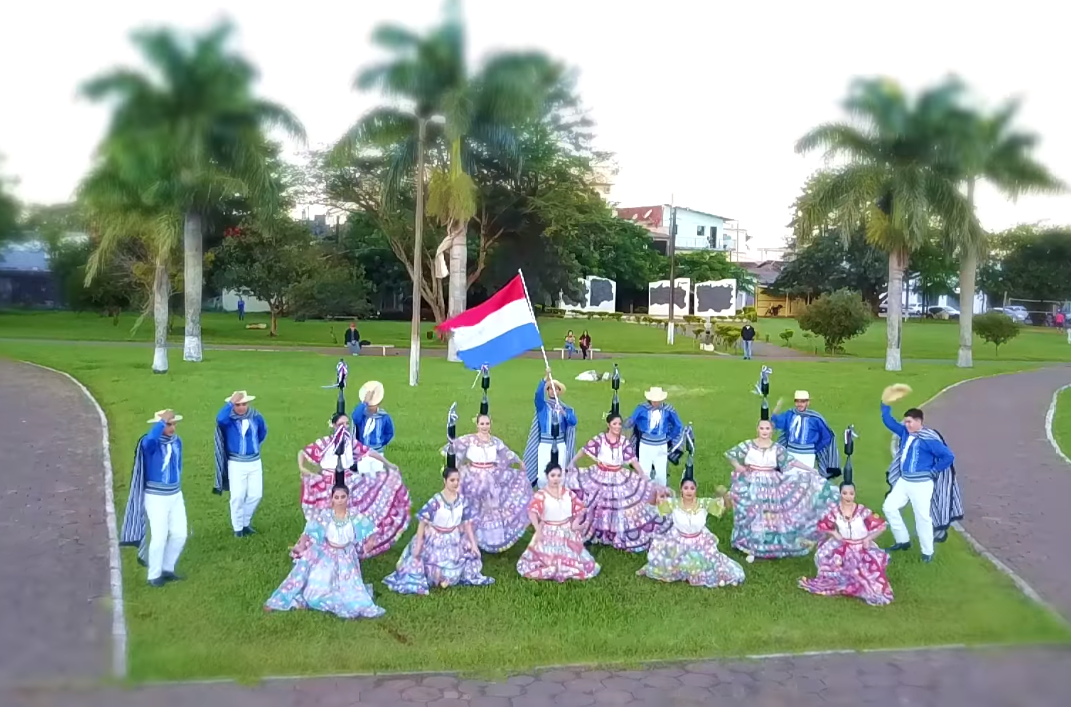Paraguayan polka on:
[Wikipedia]
[Google]
[Amazon]
 Paraguayan polka, also known as danza paraguaya (Paraguayan dance), is a style of music created in
Paraguayan polka, also known as danza paraguaya (Paraguayan dance), is a style of music created in
Polca Paraguaya
Paraguayan styles of music
 Paraguayan polka, also known as danza paraguaya (Paraguayan dance), is a style of music created in
Paraguayan polka, also known as danza paraguaya (Paraguayan dance), is a style of music created in Paraguay
Paraguay (; ), officially the Republic of Paraguay ( es, República del Paraguay, links=no; gn, Tavakuairetã Paraguái, links=si), is a landlocked country in South America. It is bordered by Argentina to the south and southwest, Brazil to th ...
in the 19th century.
The Paraguayan polka is very different from the traditional polka, mainly because the Paraguayan version combines ternary and binary rhythm
Rhythm (from Greek , ''rhythmos'', "any regular recurring motion, symmetry") generally means a " movement marked by the regulated succession of strong and weak elements, or of opposite or different conditions". This general meaning of regular re ...
s, whereas the European only uses binary. The juxtaposition
Juxtaposition is an act or instance of placing two elements close together or side by side. This is often done in order to compare/contrast the two, to show similarities or differences, etc.
Speech
Juxtaposition in literary terms is the showin ...
of the mentioned rhythms gives the peculiar sound that characterizes this style. There are several variants of the Paraguayan polka such as ''polca syryry'', ''polca kyre'y'', ''polca correntina'', ''polca popo'', ''polca saraki'', ''polca galopa'', ''polca jekutu''. All of them are slightly different because of the different influences and styles adopted by the composers in the early years of the Paraguayan polka.
The oldest polkas in Paraguay are from the early 19th century, such as ''Campamento Cerro León'', ''Alfonso Loma'', ''Mamá Cumanda'', ''Che Lucero Aguai'y'', ''Ndarekoi La Culpa'', ''London Karape'' and ''Carreta Guy''.
Celebrated polka composers
* Emigdio Ayala Báez. * Agustín Barboza. * Emilio Biggi. *Emilio Bobadilla Cáceres
Emilio Bobadilla Cáceres (1907-1979) was a Paraguayan songwriter. He was born in Cerro Verá, in the town of Pirayú, Paraguay, on March 3, 1907. He was son of Ramón Bobadilla and Isabel Cáceres.
Childhood and Youth
Still being a child he mo ...
.
* Oscar Cardozo Ocampo.
* Mauricio Cardozo Ocampo
Mauricio Cardozo Ocampo (May 14, 1907 – May 5, 1982) was the main reference of the so-called "golden generation" of the Paraguayan popular music and a strict studious of the Paraguayan folk music.
Biography
He was born in Ybycuí on May 14, ...
.
* Hilarión Correa.
* Félix Fernández.
* Emiliano R. Fernández.
* Maneco Galeano.
* Florentín Giménez.
* Herminio Giménez
Herminio Giménez (February 20, 1905 – July 6, 1991) was a Paraguayan composer.
Life
At the early age of 11 he was already part of the Paraguarí music band and two years later he was hired to be part of the Asunción marching band. While ...
.
* Juan Carlos Moreno González.
* Carlos Noguera.
* Agustín Pío Barrios
Agustín is a Spanish given name and sometimes a surname. It is related to Augustín. People with the name include:
Given name
* Agustín (footballer), Spanish footballer
* Agustín Calleri (born 1976), Argentine tennis player
* Agustín Cár ...
.
* Eladio Martínez.
* Luis Alberto del Paraná
See also
* Music of Paraguay *Chamamé
Chamamé ( Guarani for: party, disorder) is a folk music genre from Northeast Argentina and Argentinian Mesopotamia. In 2020, Chamamé was inscribed in UNESCO's Intangible cultural heritage list after it was nominated by Argentina in 2018.
C ...
References
Polca Paraguaya
Paraguayan styles of music
Paraguayan
Paraguay (; ), officially the Republic of Paraguay ( es, República del Paraguay, links=no; gn, Tavakuairetã Paraguái, links=si), is a landlocked country in South America. It is bordered by Argentina to the south and southwest, Brazil to th ...
{{Dance-stub